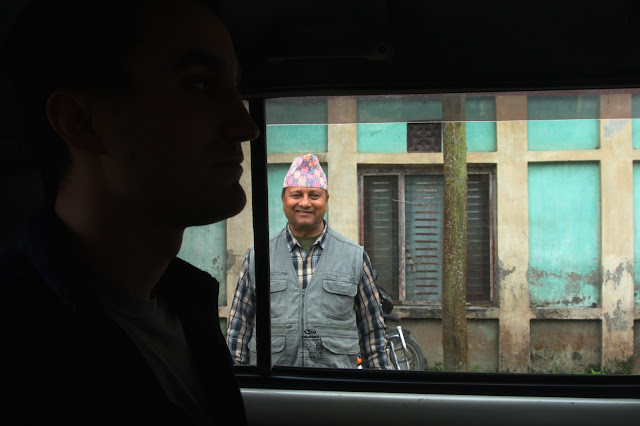A chance to see family drew us down from the mountains to the tropical Terai. This region was formerly a thick, extremely malarial jungle; it was said that "plainsmen and paharis generally die if they sleep in the Terai before November 1 or after June 1." Massive amounts of DDT brought malaria under control in the mid-1950s, allowing large parts of the Terai to be cleared and turned into economically-productive regions, now accounting for over fifty percent of Nepal's GDP. While economically advantageous, the settling and resculpting of the Terai has had negative environmental effects (deforestation, increased flooding) and has displaced or disenfranchised the indigenous population. Nepal is aiming for full malaria elimination by 2026, though considerable challenges lie ahead.*
My cousin Jordan spent six months at Sherpa Brewery outside Bharatpur, helping to brew the first craft beer of Nepal. We met up with him near Chitwan National Park, a 932 square kilometer (360 sq mi) World Heritage-listed reserve known for its sizeable wildlife population -- especially tigers, rhinos, and elephants. He brought along some home-brewed beer.
Jordan recommended staying at Rhino Lodge in Sauraha, the town just outside the park. Since we were traveling in the off-season, we rocked up without a reservation. Within 15 minutes of arrival, we had a room (complete with serious mosquito netting), a guide, and were on our way to a guided jungle walk.
The ease of arranging the jungle experience belies its potential dangers. Our guide, a Nepali man not much bigger than me, armed only with a bamboo stick, laid down the basic ground rules: in case of bear, stay still and he'd protect us with his stick by making noise to scare the bear. In case of rhino, run in a zigzag, climb a tree, or hide behind a large tree. Rhinos are huge, powerful, and liable to charge if they feel threatened, but we're more agile. We should be safe from tigers, since they don't frequent that section of the jungle. All of the guides had stories about friends who'd been injured or killed while shepherding tourists through the jungle. Reassuring, right? As tourists swooping in, it's easy to forget that a jungle is not a zoo, and that man is not always the dominant predator. Environments don't necessarily need to be feared, but they should be afforded the proper respect.
Our walk afforded just the right amount of excitement. The guide punted us down the river in a wooden canoe, pointing out crocodiles sunning themselves on the river banks, and monkeys, and birds. In the jungle, we quickly encountered a black bear. "Closer, closer!" the guide motioned, quickly followed by a whispered "Freeze! Now!" and then "Closer! Quietly!". His bamboo stick worked as advertised -- the bear reared up against a tree and stared at us before turning away.
Rhino poaching has historically been a problem in Nepal. The industry is driven by demand for rhino horn for traditional Chinese medicine and has threatened the local rhino population with extinction. The government now stations armed rhino reconnaissance patrols throughout the park to discourage poachers. We used them as rhino locators, asking if they'd had any rhino sightings that day. They directed us further along, to a point where we found a rhino bathing across the river. Great to see, but I was glad for the safety buffer!
Crossing the river into a grassy region, we saw birds and deer before circling through the elephant breeding center on our way out. Some describe jungle outings like fishing: sometimes the fish are biting, and sometimes they're not. Sometimes the animals are out to be seen, and sometimes they're elsewhere in the jungle. We were lucky to see so much within a few hours.
* The Fever: How Malaria Has Ruled Humankind for 500,000 Years by Sonia Shah is a fantastic popular science book about the historical effects of malaria and the challenges of eradication.























Thanks for make blog Chitwan National Park is located in the foothills of Himalayas, endowed with diverse flora and fauna flourishing in the most fertile region of Nepal called Chitwan valley. The valley is bounded by Mahabharat range up-north and Churia-Shiwalik hills in south which forms the international boundary with India.
ReplyDeleteI am delighted to say that the Green Visa Vietnam is one of the best tour operators there is. I have personally experienced their service and it is surely one of the best there is! I highly recommend them to anyone going to Vietnam!
ReplyDelete